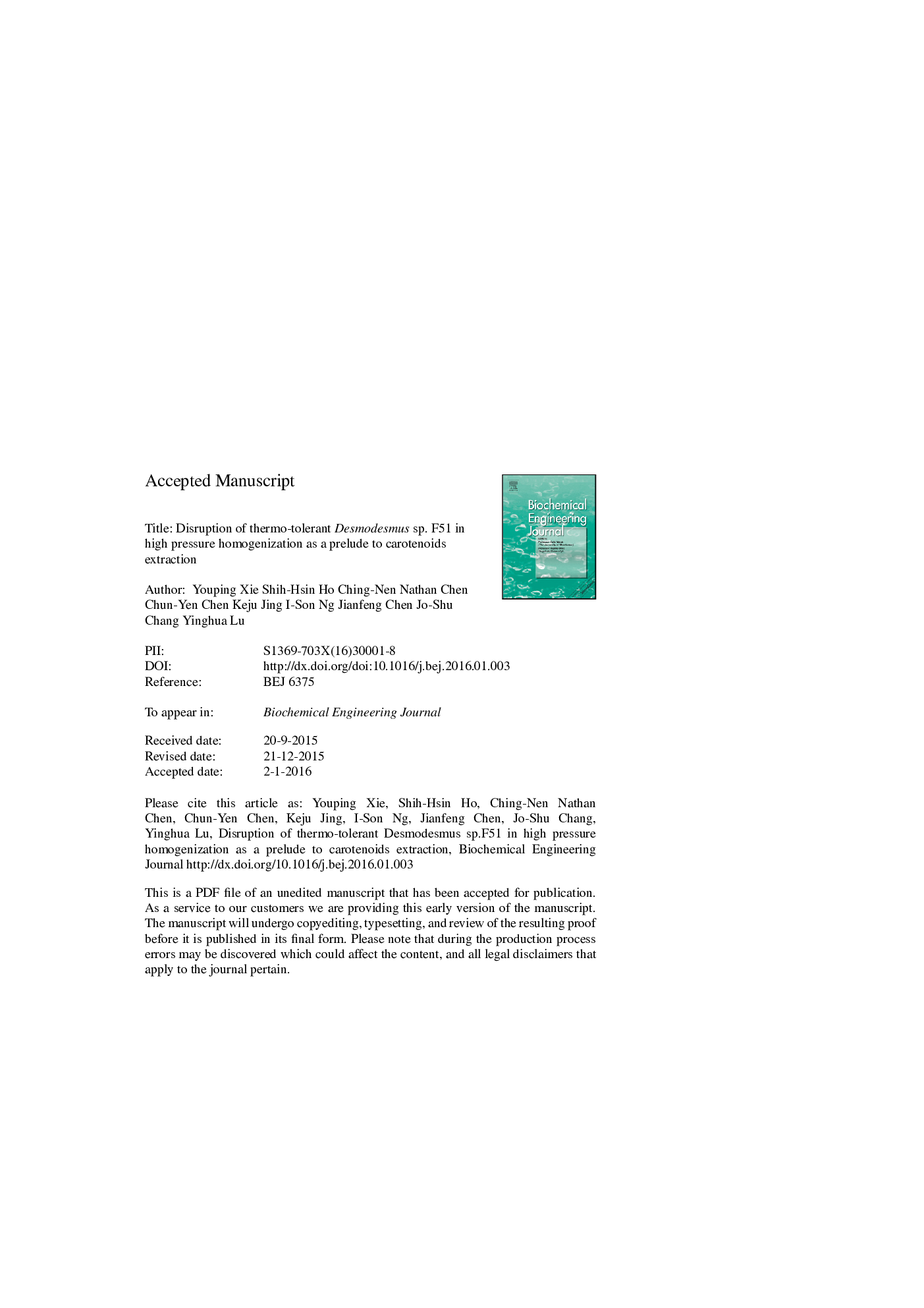| Article ID | Journal | Published Year | Pages | File Type |
|---|---|---|---|---|
| 6483982 | Biochemical Engineering Journal | 2016 | 29 Pages |
Abstract
Six methods for microalgal cell disruption were compared for the optimization of carotenoids extraction from the lutein-rich thermo-tolerant microalga Desmodesmus sp. F51. Among them, both bead-beating and high pressure homogenization (HPH) were found to have potential to disrupt Desmodesmus sp. F51 cells with high efficiency, but this study focused only on HPH treatment. Effects of homogenization pressure, cycle number and cell density on cell disruption efficiency were investigated. The degree of cell disruption increased with increasing high homogenization pressure (10-40 kpsi) and cycle number (1-4). Cell density in the range of 2.0-90 g/L did not affect the performance of cell disruption process, while a higher specific energy consumption arised when using a lower cell concentration. The HPLC analysis showed that the main carotenoids present in Desmodesmus sp. F51 were neoxanthin, violaxanthin, lutein, α-carotene and β-carotene. Moreover, the developed HPH model could well describe the cell disruption behavior at various high homogenization pressures (10-40 kpsi) and cycle numbers (1-4). The obtained parameters indicate that homogenization pressure is a more significant factor than cycle number in achieving high cell disruption efficiency.
Related Topics
Physical Sciences and Engineering
Chemical Engineering
Bioengineering
Authors
Youping Xie, Shih-Hsin Ho, Ching-Nen Nathan Chen, Chun-Yen Chen, Keju Jing, I-Son Ng, Jianfeng Chen, Jo-Shu Chang, Yinghua Lu,
